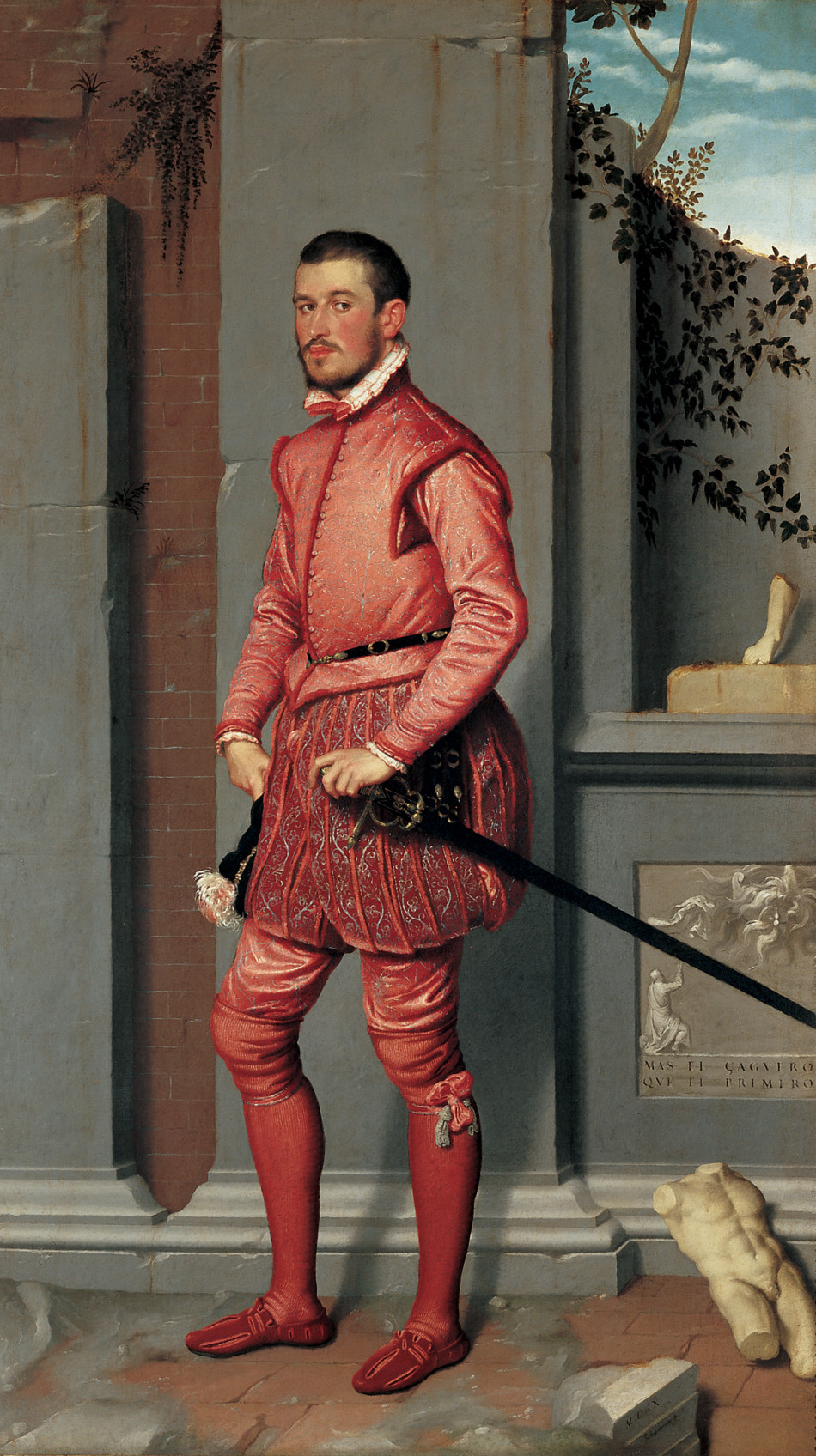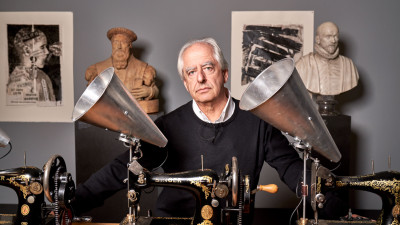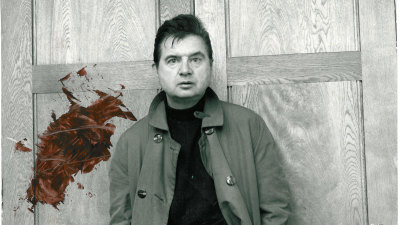Curator’s picks: Giovanni Battista Moroni
Curator’s picks: Giovanni Battista Moroni
By Arturo Galansino
Published 12 November 2014
Curator Arturo Galansino chooses his favourite five works from the critically-acclaimed exhibition.
-
Portrait of Giovanni Gerolamo Grumelli (‘The man in pink’)
In this imposing full scale portrait, a young man is standing in front of an imposing architectural setting. He is looking straight at us with a proud attitude, dressed in an elaborate and ostentatious pink velvet suit embroidered with silver. The coral pink costume worn by this scion of the Bergamese aristocracy is the most striking feature of the painting. The unconventional colour held a special meaning for the sitter as his coat of arms was a coral branch.
-

Giovanni Battista Moroni, Gian Gerolamo Grumelli, c. 1560.
Oil on canvas. 216 x 123 cm. Fondazione Museo di Palazzo Moroni - Lucretia Moroni Collection, Bergamo. Photo Lucretia Moroni Collection, Fondazione Museo di Palazzo Moroni. Photography: Marco Mazzoleni.
-
The Last Supper
In this huge altarpiece, the animated scene of the Last Supper is staged under a classical loggia. Christ and his apostles have refined and idealised facial features. Behind them stands a man who looks in the direction of the beholder, outside the canvas. The naturalism of his face clearly suggests that this is the portrait of a real person. He is dressed like a priest and holds a cruet of wine, an item used in Mass. The sitter is in fact Lattanzio da Lallio, the parish priest of Romano di Lombardia.
-

Giovanni Battista Moroni, The Last Supper, 1566-69.
Oil on canvas. 295 x 195 cm. Church of Santa Maria Assunta e San Giacomo Maggiore Apostolo, Romano di Lombardia. Photo © Marco Mazzoleni.
-
Portrait of a tailor
Here we are admiring a tailor, surprised during his everyday activity as he is about cut with his scissors a piece of luxury cloth in black velvet marked with white chalk lines. He is no doubt a skilful artisan and his elegant clothes attest to the economic success of his trade. To represent a manual worker in such a dignified and respectful way was unique in Renaissance portraiture. This almost anachronistic image is the highlight of Moroni’s output.
-

Giovanni Battista Moroni, The Tailor, c.1570.
Oil on canvas. 99.5 x 77 cm. The National Gallery, London. Photo © The National Gallery, London.
-
Portrait of a Young Lady
Moroni used the half-bust format for some of his more intimate and intense portraits. The identity of this pretty young woman is unknown, but her elegant dress, a flowing gown of pink brocade with white ruff collar; her haircut in the latest fashion and opulent jewellery indicate that we are in the presence of an aristocratic young lady. Her piercing and almost inquisitorial gaze denotes a witty and unabashed spirit.
-

Giovanni Battista Moroni, Portrait of a Young Lady, c. 1575.
Oil on canvas. 51 x 42 cm. Private collection. Photo Private collection.
-
Portrait of an Elderly Man Seated with a Book (Pietro Spino?)
An old man is sitting in a shady room whose background is a simple bare wall. He is probably the humanist Pietro Spino, a friend of Moroni’s. His expression is intimidating, almost scowling. It is as if we had entered the room without knocking and disturbed his reading and deep meditation.
It was probably painted in Moroni’s studio as the same grey wall, dantesca chair and book with a yellow cover appear in other portraits.
-

Giovanni Battista Moroni, Portrait of an Elderly Man Seated with a Book (Pietro Spini?), c.1575-79.
Oil on canvas. 98 x 80 cm. Accademia Carrara, Bergamo. Photo: Comune di Bergamo-Accademia Carrara.
-
Giovanni Battista Moroni is in The Sackler Wing of Galleries at the RA until 25 January 2015.
Arturo Galansino is the curator of Giovanni Battista Moroni.








